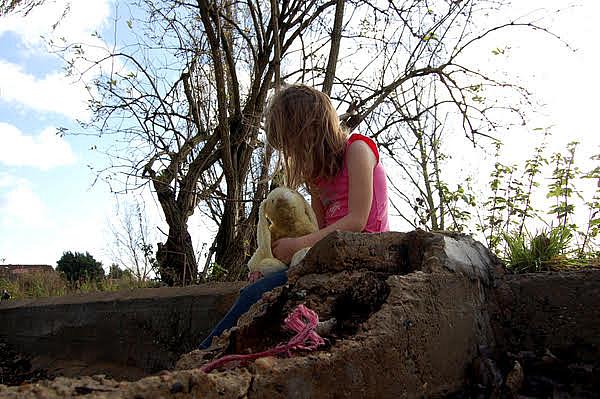What does the research say is the best way to treat victims of child maltreatment?
Much of the discussion around child maltreatment understandably focuses on prevention.
But what about kids who have already suffered abuse and neglect? What does the evidence show is the best way to treat them?
The answer, it turns out, is complicated.
A 2013 review for the federal Agency for Healthcare Research and Quality concluded that it’s “too early to make strong treatment recommendations, as comparative research remains relatively nascent in the child maltreatment arena.” The paper found that only one program even had moderately strong evidence to back up its efficacy: KEEP, or Keeping Foster and Kinship Parents Trained and Supported.
“The biggest problem is having parents agree to participate in research and stay in a research study,” said one of the review’s authors, Jenifer Goldman Fraser, now a senior research analyst with Zero to Three, a Washington, D.C.-based nonprofit focusing on early childhood development. “That creates a problem for psychologists like myself who want to learn how to intervene better.”
But the fact that the KEEP program had as strong of evidence as it did — it was found to increase positive parenting discipline and reduce child behavioral problems — points to a widely accepted notion among child welfare experts: that the best way to treat a very young victim of child maltreatment is to treat the parents or caregivers.
“The interventions for little guys are mostly parenting interventions,” said Susan Timmer, a research scientist with UC Davis Children’s Hospital. In 2014, she and a colleague, Anthony Urquiza, published the book “Evidence-Based Approaches for the Treatment of Maltreated Children.”
Young children are generally too undeveloped to comprehend trauma-focused cognitive behavioral therapy, which is often recommended for older children. And, Timmer noted, evidence doesn’t support the effectiveness of play therapy.
Some of the parenting intervention programs outlined in Timmer and Urquiza’s book include, for infants, child-parent psychotherapy, and, for 2- to 8-year-olds, Incredible Years, the Triple P-Positive Parenting Program and Parent-Child Interaction Therapy.
The details vary, but there’s a common thread: Programs like these help caregivers become more supportive — a critical need for kids who feel unattached — and less likely to mistreat their children in the future. The basic idea is that the best way to treat a child who has suffered abuse or neglect is to show their caregiver how to be a loving, nurturing force in their life.
Timmer and Urquiza have been for years been training providers in Parent-Child Interaction Therapy, in which the therapist observes the parent and child interacting from another room and gives coaching advice through an earpiece. Timmer has since developed an abbreviated version of the program, called Parent-Child Care.
Goldman Fraser noted that young children are particularly vulnerable to the adverse effects of abuse and neglect, because of all the brain development that happens at that age. Maltreatment, she said, “overwhelms their capacity to cope.” Research has shown abuse and neglect can lead to measurable changes in brain function.
The details vary, but there’s a common thread: Programs like these help caregivers become more supportive — a critical need for kids who feel unattached — and less likely to mistreat their children in the future.
“Their cognitive and emotional energy gets directed toward self-preservation rather than exploring the world and learning to read and being interested in things around them,” Goldman Fraser said. Their symptoms can include temper tantrums, bedwetting, and overeating or not eating enough.
“Very young children exposed to something scary, the way they heal is in the context of relationships — they look to their caregiver to make them feel safe again,” she said. The trouble deepens when there’s not a nurturing caregiver present to help them feel that sense of safety.
She noted that many of the parents involved in the child welfare system were themselves victimized as kids, so these interventions are as much or more for them as for the child.
She said, for instance, that child-parent psychotherapy has the parents think about their “ghosts in the nursery” — “where they were psychologically or emotionally injured as children” — as well as their “angels in the nursery” — “somebody in their life who made them feel loved and cared for and made them feel safe.”
For older kids, trauma-focused therapy, Timmer said, creates a “trauma narrative, with gradual exposure to the traumatic event.” Goldman Fraser said that “helps somebody pull themselves out of the narrative that they’re bad, that they’re damaged goods, that no one loves them, that they’re unloveable.”
Another option Timmer and Urquiza cite for “middle childhood” is trauma-focused therapy for families. (Suggestions for adolescents include an approach called “dialectical behavioral therapy”).
Timmer noted that treatment for victims of sexual abuse is often more intensive and repetitive than that for neglect or phsyical abuse. “Sexual abuse is a whole different animal,” she said. “There’s a lot more aggression, a lot more emotional reactivity.”
“You see how different interventions are tailored for different complications: when something happens, how long it was going on, how severe the effects are,” she said.
An additional consideration is that kids handle abuse and neglect differently. To use one popular set of metaphors, some kids are “dandelions” and others “orchids.”
“There are some people who have bad things happen to them who, for a bunch of reasons, have a remarkable ability to be resilient,” Urquiza said. “There are other people who get involved in drugs and alcohol and other maladaptive coping strategies ... and they have multiple problems that need to be addressed.”
He added: “Once you get into substance abuse and have a trauma history, it’s much more difficult to treat those people.”
Timmer said that while there are a decent number of effective treatments for child abuse and neglect, the bigger challenge is making sure that more people are trained in them, while Goldman Fraser said more research on new interventions is needed. Both, of course, would require more funding.

